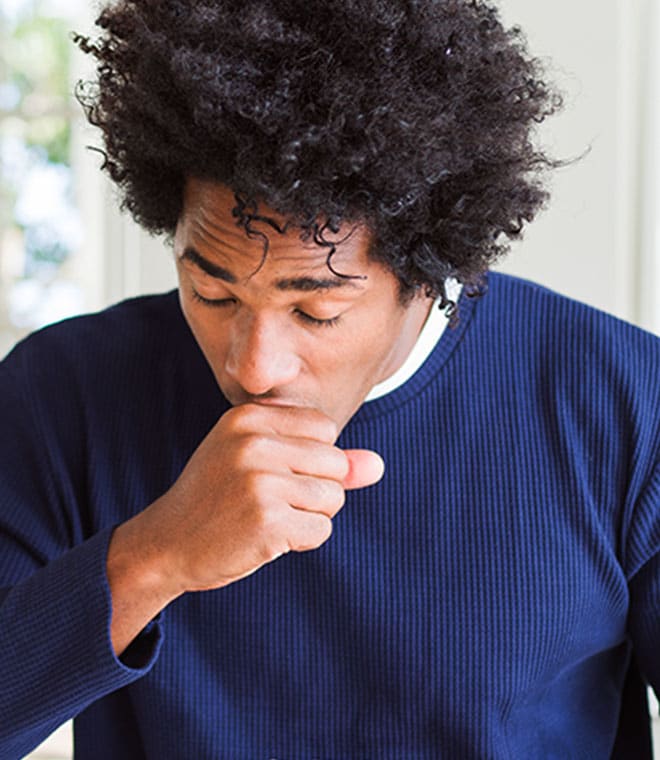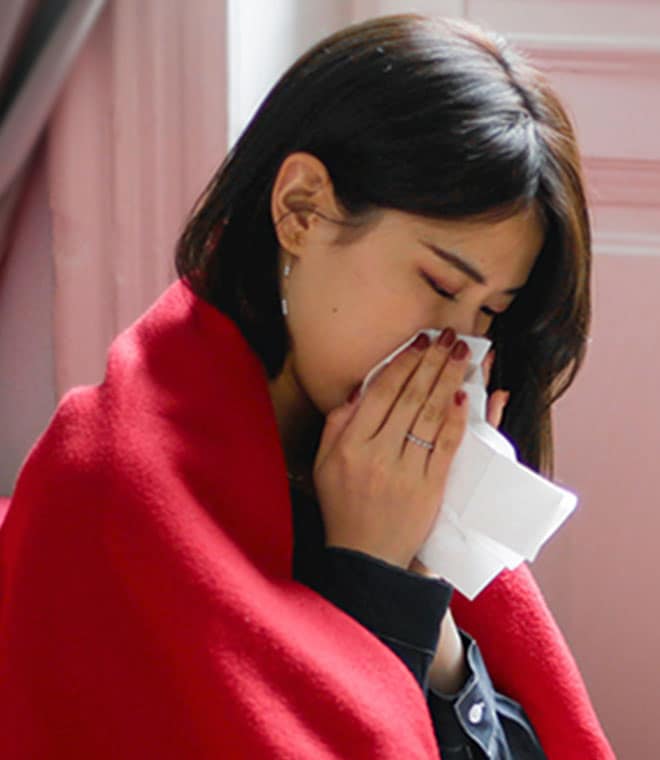Health
Mold allergy: symptoms, causes and treatments
By Sanjay “Jay” Patel, DO | Allergy & Immunology Aug 19, 2024 • 7 min
There are more than 1,000 species of mold in the United States. Certain species have the potential to trigger allergies in some people, leading to a variety of symptoms that can be managed with appropriate treatments.
What is mold?
Mold is a fungus found throughout the world. Some species of mold are more common outdoors. They may be more prevalent in the environment during certain seasons, or they may be present year-round. Mold can also grow indoors, where it usually prefers dark, damp places, such as basements.
What causes a mold allergy?
Like all allergies, a mold allergy is a sensitivity to an otherwise harmless substance called an allergen. When you come in contact with an allergen, your immune system initiates a cascade of reactions to protect the body the way that it would in the presence of germs. This immune system reaction is responsible for allergy symptoms.
In the case of mold allergy, mold is the allergen that leads to the immune system response. People with mold allergies can be allergic to just one type of mold or many types. While it’s possible to be allergic to any species of mold, some types are more common allergens than others, such as:
- Alternaria molds
- Aspergillus molds
- Cladosporium molds
- Penicillium molds (Not to be confused with penicillin medication allergy)
- Stachybotrys chartarum, a form of black mold
What are the symptoms and signs of mold allergy?
If you breathe in or touch mold that you’re allergic to, the following symptoms may occur:
- Coughing
- Itchy or watery eyes
- Itching of the nose and throat
- Nasal congestion
- Runny nose
- Skin rash
- Sneezing
- Wheezing
Mold allergy symptoms differ from person to person. Even if you have an allergy to mold, you may not experience every symptom mentioned above.
Exposure to mold can trigger more severe allergic reactions or complications in some people, particularly those with lung conditions or a compromised or suppressed immune system.
How are mold allergies treated?
Mold allergies are manageable with the right treatment plan. Your healthcare provider can help you determine which treatments may be best for you. Potential treatments include the following:
1. Reducing mold exposure: Your healthcare provider may order skin and/or blood tests to diagnose a mold allergy. The results of these tests can identify which species of mold you’re allergic to. You can use this information to determine how to reduce exposure to molds that trigger your symptoms. Some general ways to minimize mold exposure include:
- Using mold count reports: Mold counts indicate how much mold is present outdoors on any given day. Remember that mold spore counting may only identify a few species of molds, so discussing a mold calendar with your healthcare provider can also help predict exposures. Staying inside as much as possible when mold counts are high can help control your allergies.
- Protecting yourself outdoors: If you’re allergic to outdoor molds, wear a mask when working outside. Outdoor molds are commonly a problem during windy days or near soil, compost or rotting leaves. When you come inside, remove your clothing quickly and shower to wash off any spores.
- Remediating mold: In some cases, mold overgrowth in a basement or other parts of the home may be responsible for allergy symptoms. A mold remediation specialist can locate molds and implement plans to remove the fungus.
- Improving indoor air quality: Using a high-energy particulate air (HEPA) filtration system can help remove mold spores and other allergens from your home. Dehumidifiers and exhaust fans can reduce moisture levels to minimize the chances of future mold growth. Soils from potted plants and spoiled food in the refrigerator can also be common sources of mold.
- Cleaning regularly: Clean up spills promptly to lower the likelihood of mold growth. If your home has water damage, take steps to dry the area thoroughly. Keep garbage cans, refrigerator drip pans and gutters clean.
2. Allergy medications: Over-the-counter allergy medications and prescription treatments can help ease allergy symptoms. Depending on the type of mold you’re allergic to, you may need to take medications throughout the year or only during certain seasons. Types of allergy medications include:
- Over-the-counter oral antihistamines: Available without a prescription, the medications loratadine (Alavert, Claritin), fexofenadine (Allegra) and cetirizine (Zyrtec) disrupt the activities of the immune system antihistamine to address allergy symptoms.
- Antihistamine nasal sprays: Antihistamines can also be administered directly to the nasal passages via over-the-counter and prescription nasal sprays.
- Corticosteroid nasal sprays: Fluticasone (Flonase Allergy Relief, Xhance), mometasone (Nasonex), triamcinolone and budesonide (Rhinocort) and other
over-the-counter nasal sprays reduce inflammation to ease allergy symptoms. - Prescription oral medications: Healthcare providers may prescribe oral antihistamines or other medications, such as montelukast (Singulair), to treat mold allergies.
3. Immunotherapy: Immunotherapy desensitizes the immune system to allergens over time. It involves administering small amounts of mold allergens sublingually or via injection. Healthcare providers may combine immunotherapy with medications for mold allergy treatment.
Updated August 2024.
Sources:
- https://www.aaaai.org/conditions-treatments/allergies/mold-allergy
- https://www.aaaai.org/tools-for-the-public/allergy,-asthma-immunology-glossary/mold-counts-defined
- https://acaai.org/allergies/allergic-conditions/mold-allergies/
- https://www.mayoclinic.org/diseases-conditions/mold-allergy/symptoms-causes/syc-20351519
- https://my.clevelandclinic.org/health/diseases/24862-black-mold
- https://my.clevelandclinic.org/health/diseases/22309-mold-allergy
- https://www.health.harvard.edu/a_to_z/allergy-overview-a-to-z
- https://www.mayoclinic.org/diseases-conditions/mold-allergy/diagnosis-treatment/drc-20351525



